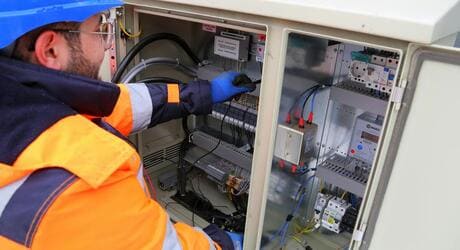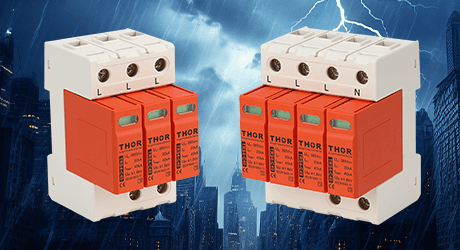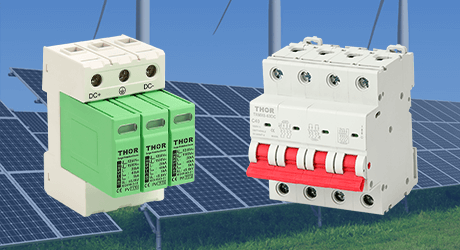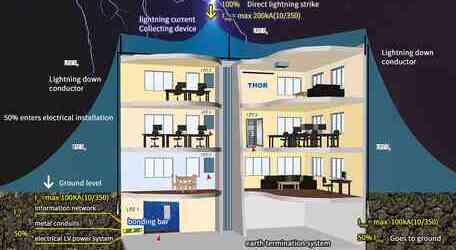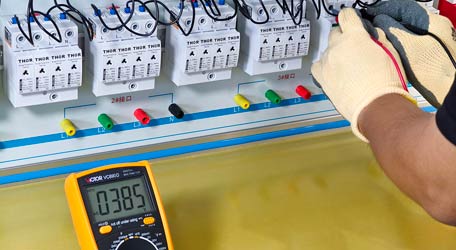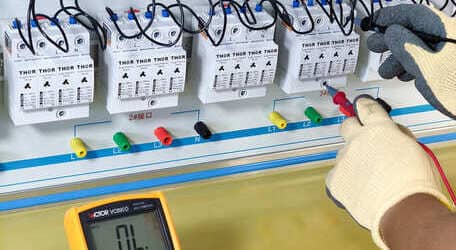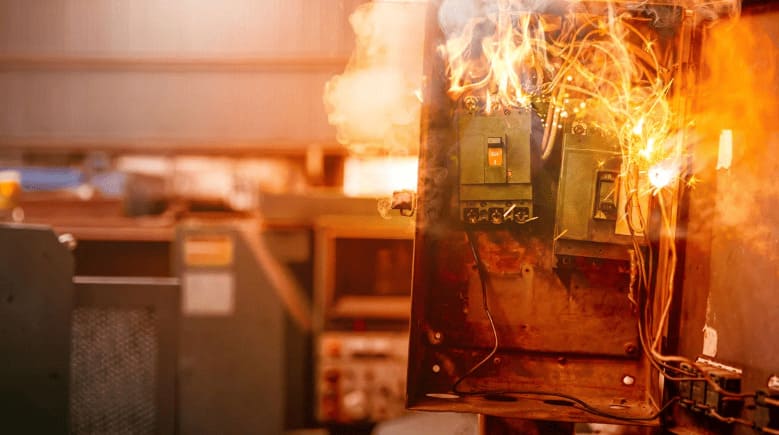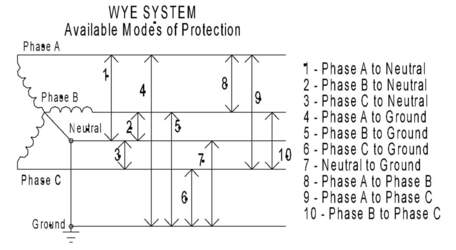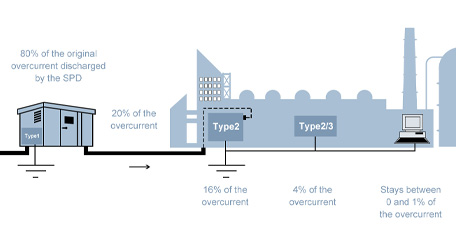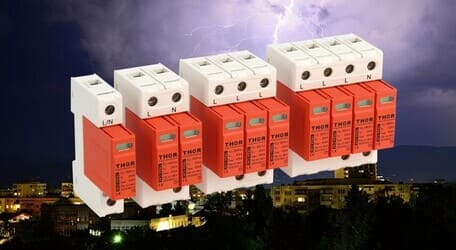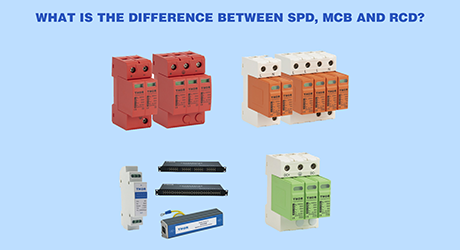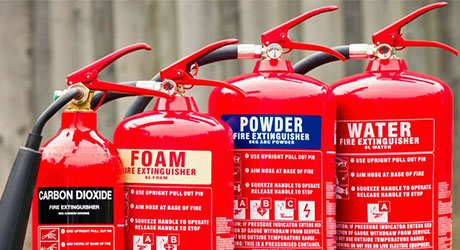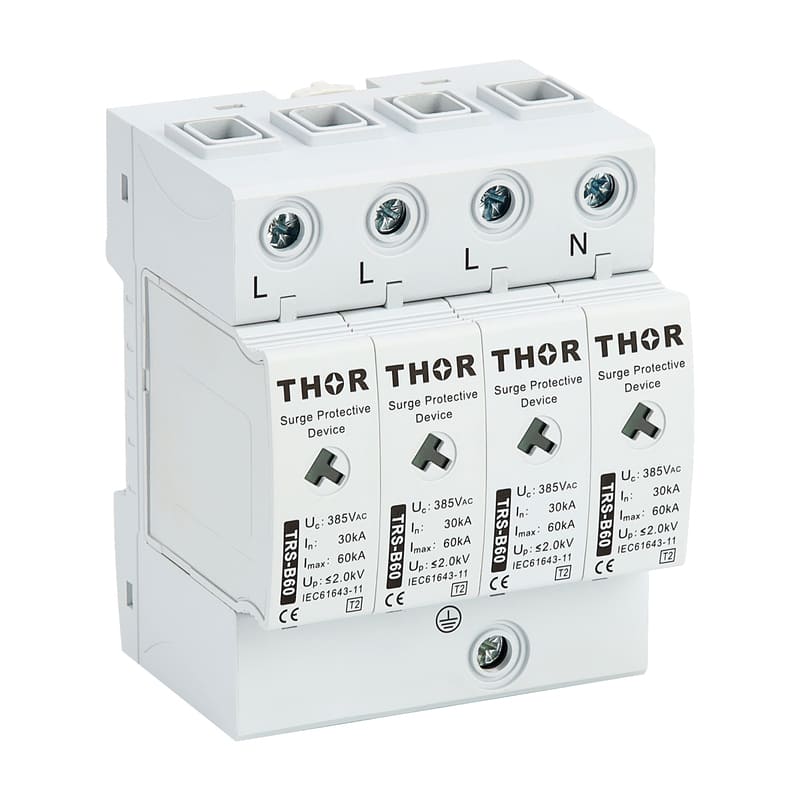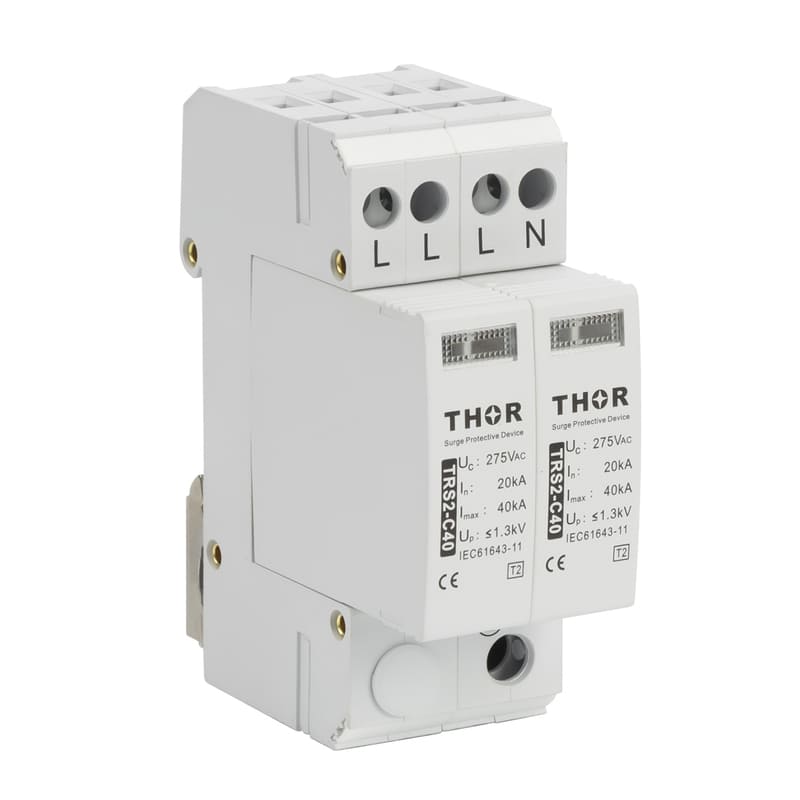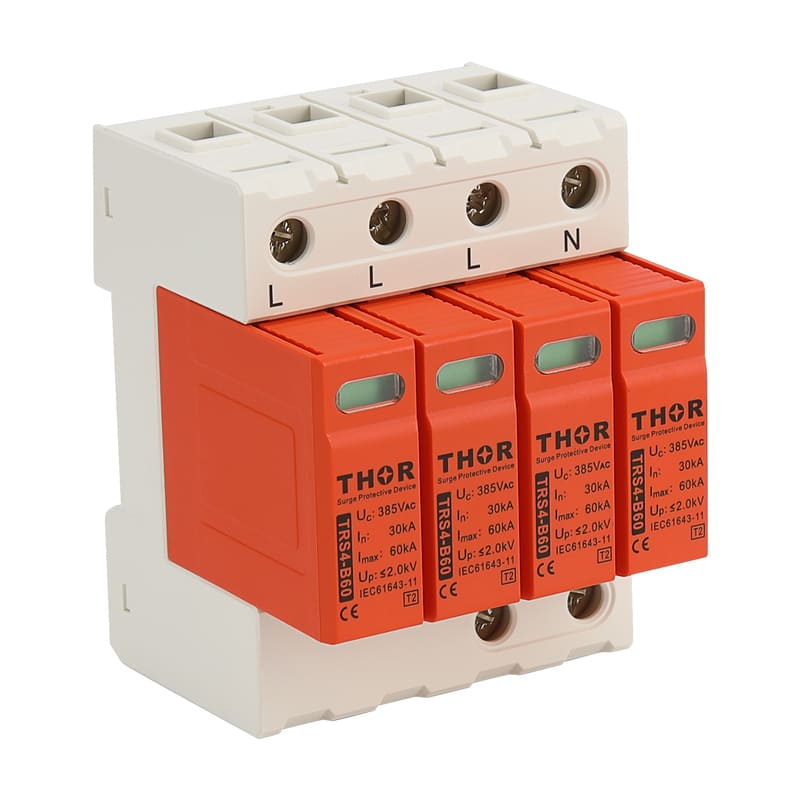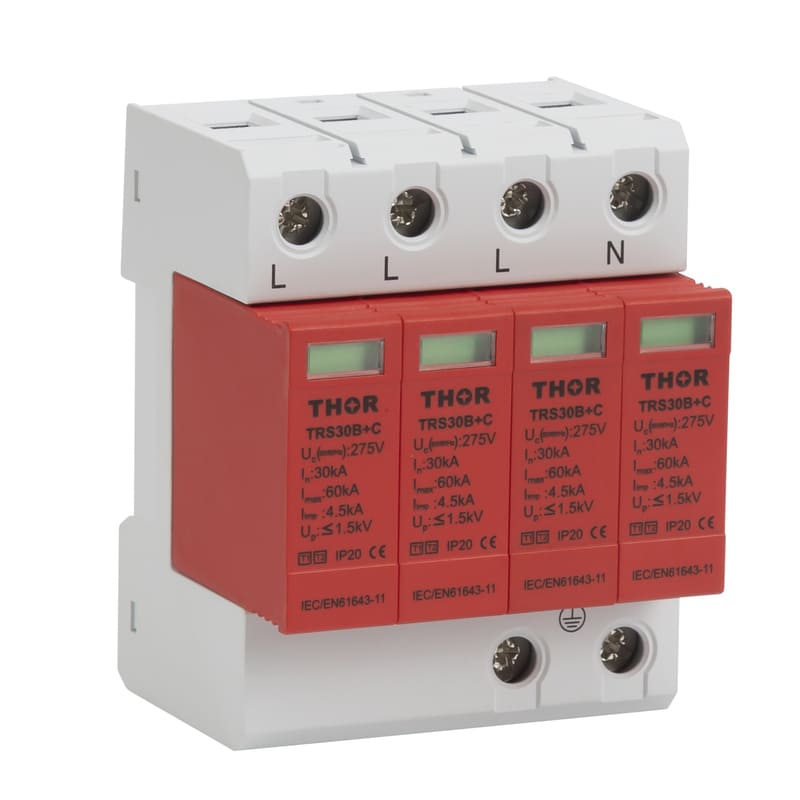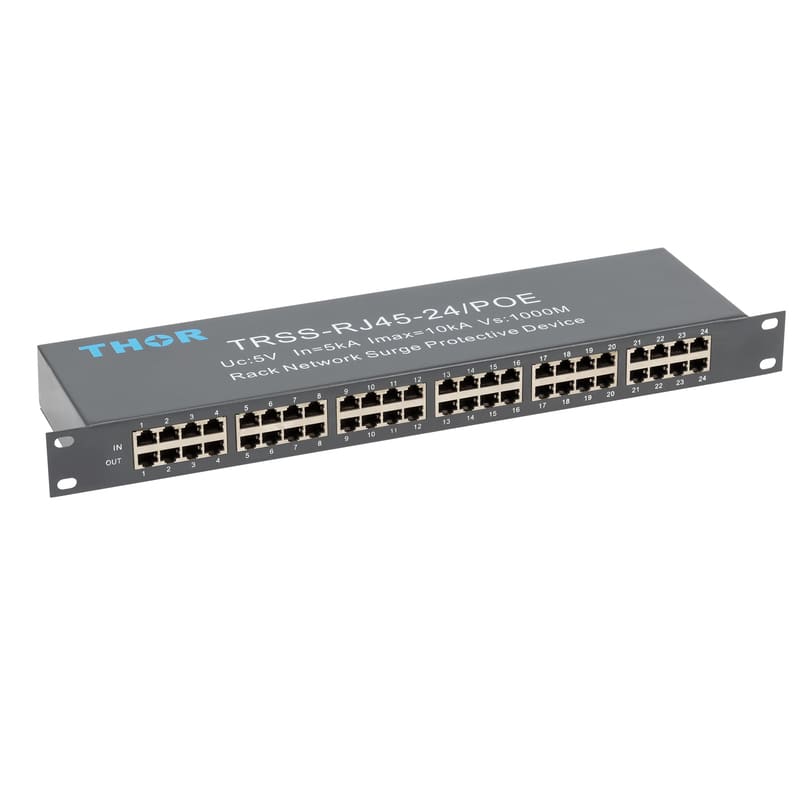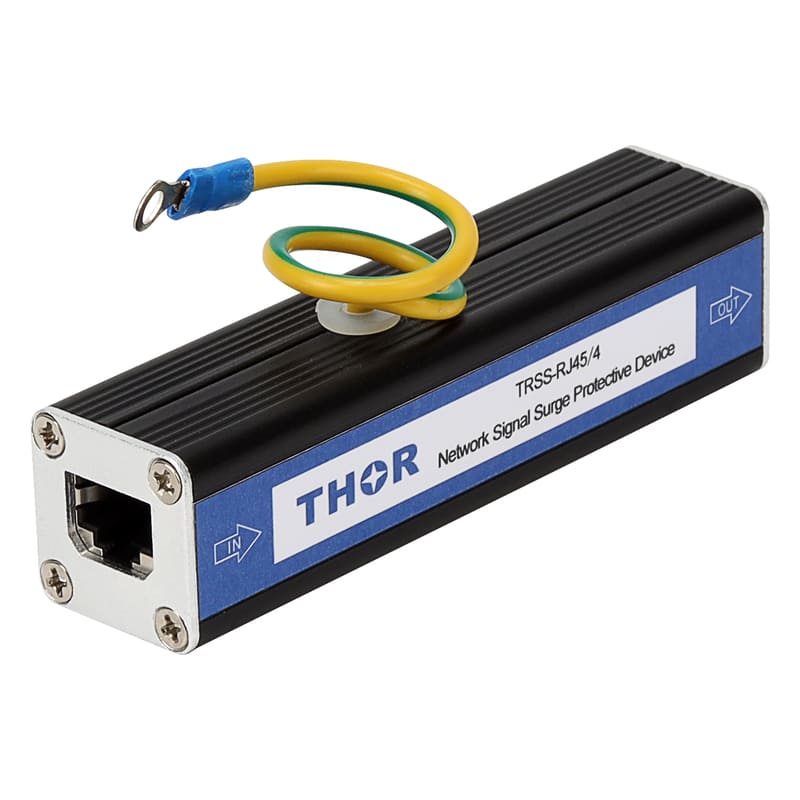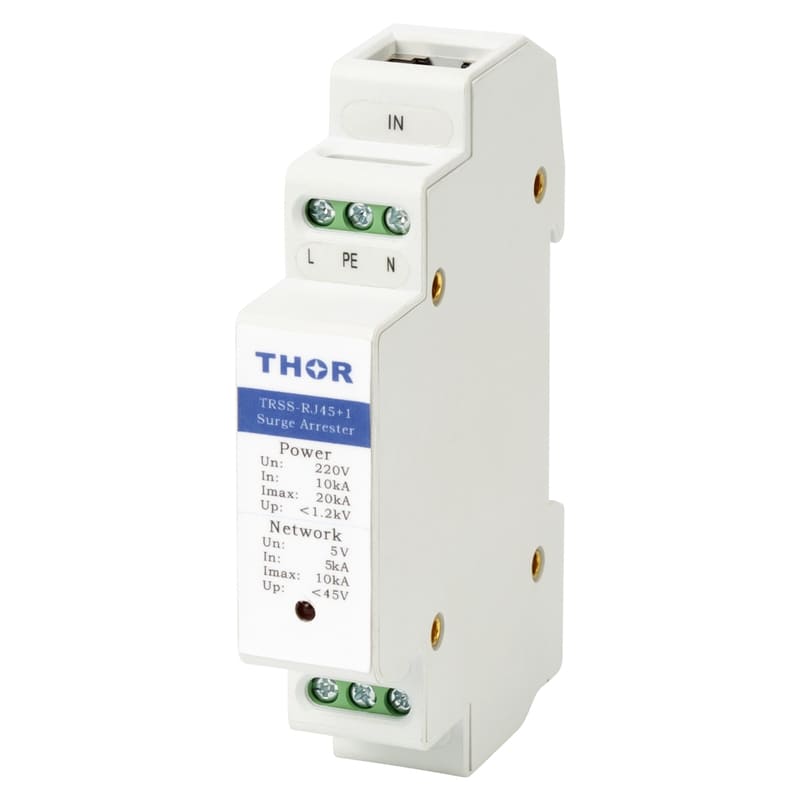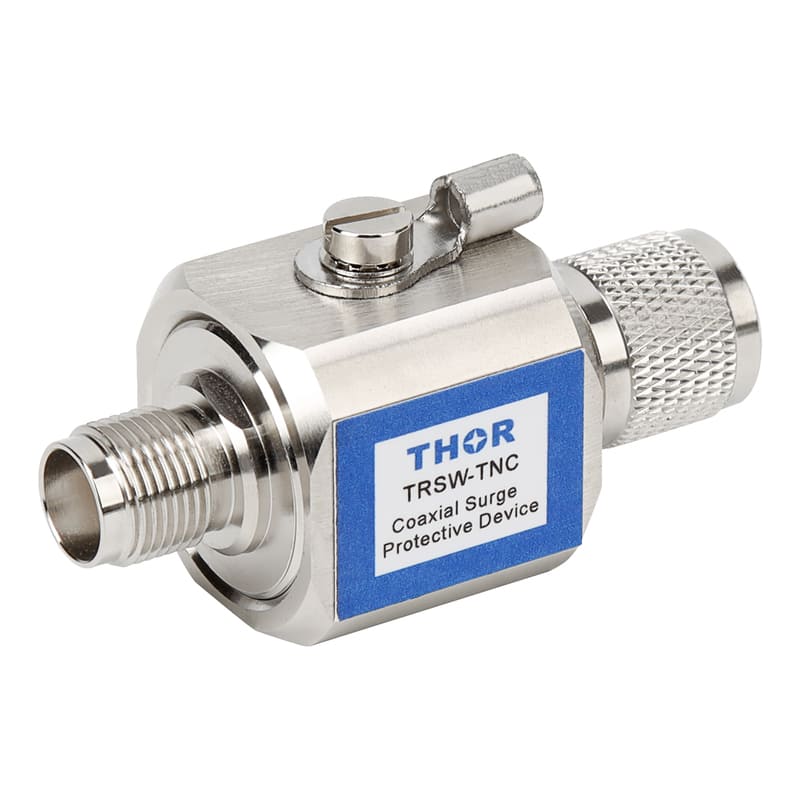Surge Protective Devices (SPD) are used to protect the electrical installation, which consists of the consumer unit, wiring and accessories, from electrical power surges known as transient overvoltages.
They are also used to protect sensitive electronic equipment connected to the installation, such as computers, televisions, washing machines and safety circuits, such as fire detection systems and emergency lighting. Equipment with sensitive electronic circuitry can be vulnerable to damage by transient overvoltages.
The effects of a surge can result in either instant failure or damage to the equipment only evident over a longer period of time. SPDs are usually installed within the consumer unit to protect the electrical installation but different types of SPD are available to protect the installation from other incoming services, such as telephone lines and cable TV. It is important to remember that protecting the electrical installation alone and not the other services could leave another route for transient voltages to enter the installation.
Surge protection devices play a vital role in voltage fluctuations or variations. These fluctuations are the most common behaviours observed in any electrical system. Voltage change can vary from small voltage fluctuations for a short duration to a complete blackout for an extended period. When the voltage drops below the standard rate (of tolerance) for the short term, it is called sag. When the voltage increases, it is called swell. There are many fluctuations with shorter durations than swell and sag. These very short fluctuations are called transients, impulses, spikes or a notch. An increase in at least 10 per cent of voltage or current lasting for less than a few microseconds is known as a Surge. The amount of electrical energy produced during a surge (for short period) will be significantly high as it can rise to a few thousand volts.
A surge protection device is a device that protects electrical devices from voltage spikes in alternating current (AC) circuits. Surge protection devices safeguard the electrical installation made up of consumer unit, wiring and accessories, from electrical power surges, generally known as transient overvoltages. The surges occurring from transient overvoltages can either result in instant failure or longer damage to the equipment. Different SPDs are used to protect the electrical installation from incoming services such as telephone lines and cable TV within the consumer unit.
Transient voltages are short duration surges of electricity that occur due to the sudden release of energy that is previously stored or induced by other means. These overvoltages can be occurring either naturally or can be man-made.
Man-made transient overvoltage occurs during the switching of motors and transformers. New technologies such as electric vehicles, air/ ground source heat pumps and speed-controlled washing machines are showing more transients even in domestic installations. A natural transient overvoltage occurs due to indirect lightning strikes. The electrical installation/equipment associated with it can be damaged due to a direct lightning strike on an adjacent overhead power transmission line or a telephone line, leading to the transient overvoltage to travel along the transmission lines.
The function of a surge protective device is to protect electrical equipment from the damaging effects of electrical surges. The rating of SPD decides the amount of protection provided by the SPD. An SPD protects an electric circuit by limiting the voltage applied to the protected circuit during the occurrence of a surge. The SPD channels the excess energy (obtained from the surge) away from the protected circuit into the ground. A metal oxide varistor (MOV) is a device in SPD that provides a path or excess energy. There are two main characteristics of a MOV which make them most desirable for surge protection.
- The resistance of a MOV decreases with an increased voltage
- MOVs are fast-acting varistors, that can respond to surge in a few nanoseconds, which help in suppressing the surge before it damages the equipment.
The voltage limiting capability of a MOV can be measured by clamping voltage. When a surge occurs, the MOV limits the excess voltage to the clamping voltage level by diverting the surplus energy to the ground. The peak current rating or impulse current rating is the maximum current dissipated from one surge without failing the operation of an SPD.
A MOV provides a high resistance path under normal conditions. The resistance path limits the currents flowing through the MOV and allows the current to flow through. The load in all electrical devices is connected to power sources in all residential applications. The clamping voltage rating of a MOV is greater than the standard supply voltage. When a surge happens, the clamping voltage exceeds, the MOV switches from a high resistance path to a low resistance path. The excess energy generated passes through the MOV to the ground bypassing the connected load. Along with MOVs, SPDs also have inductors or other filter elements to reduce the effects of the surge and incorporate other protective devices to ensure the safe operation of SPDs
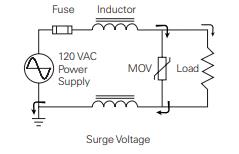
Fig: Operation of MOV (Source: siemens)
There are same different types of Surge Protective Devices:
1. Type 1 SPD installed at the main distribution board i.e. origin.In this type of arrangement, an SPD is mounted between the service transformer’s secondary terminal and its main overcurrent protection device called a surge arrester.
Type 1 SPD is characterized by a 10/350 μs current wave.
2. Type 2 SPD installed at sub-distribution boards.In this type of arrangement, the SPD is mounted at the load side of the service’s main overcurrent protection device that is known as a Transient Voltage Surge Suppressor (TVSS)
Type 2 SPD is characterized by an 8/20 μs current wave.
3. Combined Type 1 & 2 SPDs are available and are usually installed in consumer units.
4. Type 3 SPD installed close to the protected load. Type 3 SPD is characterized by a combination of voltage waves (1.2/50 μs) and current waves (8/20 μs). A combination of Type 1 and Type 2 SPDs are also used and usually installed in consumer units. Type 3 SPDs must be used only as a supplement to Type 2 SPD.
Where multiple devices are required to protect the installation, they must be coordinated to ensure correct operation. Items supplied by different manufacturers should be confirmed for compatibility, the installer and manufacturers of the devices are best placed to provide guidance on this.
What are transient overvoltages?
Transient overvoltages are defined as short duration surges of electricity which occur due to the sudden release of energy previously-stored or induced by other means. Transient overvoltages can be either naturally occurring or man-made.
How do transient overvoltages occur?
Man-made transients appear due to switching of motors and transformers, along with some types of lighting. Historically this has not been an issue within domestic installations but more recently, installations are changing with the advent of new technologies such as electric vehicle charging, air/ground source heat pumps and speed-controlled washing machines have made transients much more likely to occur within domestic installations.
Natural transient overvoltages occur due to indirect lightning strikes most likely to happen due to a direct lightning strike on an adjacent overhead power or telephone line causing the transient overvoltage to travel along the lines, which can cause significant damage to the electrical installation and associated equipment.
Do I have to have SPDs installed?
The current edition of the IET Wiring Regulations, BS 7671:2018, states that unless a risk assessment is carried out, protection against transient overvoltage shall be provided where the consequence caused by
overvoltage could:
Result in serious injury to, or loss of, human life; or Result in interruption of public services and/or damage to cultural heritage; or Result in interruption of commercial or industrial activity; or Affect a large number of co-located individuals. This regulation applies to all types of premises which include domestic, commercial and industrial.
Before purchasing a surge protection device, one must analyze the safety risk factors and the cost evaluation, The Requirements & Testing of any Surge protection device is as per IEC 6163-1 is to protect the equipment from transient overvoltage until the risk assessment is completed,as they are expensive than the cost of electrical installation and equipment connected to the SPDs. Appropriate physical space is mandatory for installing it. In case not, an external enclosure adjacent to the existing unit works.
Thank you for reading our Product News, THOR is a leading manufacturer and supplier of Electrical Components to over 50+Countries. To get a quote or to talk to our industry expert Contact Us.

